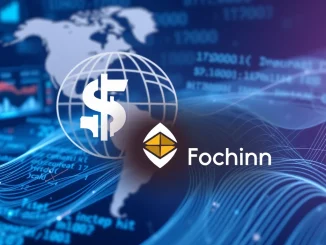
Major news in the digital asset space! Anchorage Digital, a leading digital asset platform and crypto infrastructure provider, is set to acquire stablecoin issuer Mountain Protocol. This move signals a clear strategic intent by Anchorage Digital to significantly enhance its position within the rapidly evolving market for institutional stablecoins.
Why is Anchorage Digital Acquiring Mountain Protocol?
According to CoinDesk’s reporting, Anchorage Digital CEO Nathan McCauley highlighted the acquisition as a critical step to strengthen Anchorage Digital’s role in serving institutional clients with stablecoin solutions. The stablecoin market is a vital bridge between traditional finance and the crypto world, and institutional adoption is a key growth driver. By integrating Mountain Protocol, Anchorage Digital aims to:
- Enhance its stablecoin technology stack.
- Expand its talent pool with Mountain Protocol’s team.
- Incorporate Mountain’s existing licensing structure, potentially streamlining regulatory pathways.
This strategic crypto acquisition positions Anchorage Digital to offer more robust and compliant stablecoin services to its institutional clientele.
What Does This Mean for Institutional Stablecoins?
The focus on institutional stablecoins is becoming increasingly important. These are stablecoins designed specifically for use by large financial institutions, offering features like regulatory compliance, high liquidity, and integration with existing financial infrastructure. Mountain Protocol has been active in this niche, and its integration into Anchorage Digital’s broader digital asset platform is expected to accelerate the development and adoption of such solutions.
The acquisition suggests a market trend towards consolidation and specialization, with companies like Anchorage Digital building comprehensive platforms that can meet the complex needs of institutional investors entering the digital asset space.
Integrating Mountain Protocol’s Technology and Talent
A core part of the acquisition plan involves integrating Mountain Protocol’s technology, personnel, and licensing into Anchorage Digital’s existing operations. This integration is crucial for realizing the strategic benefits of the deal. Key aspects likely include:
- Merging technical teams to combine expertise in stablecoin issuance and digital asset security.
- Integrating Mountain Protocol’s stablecoin issuance and management technology into Anchorage’s platform architecture.
- Leveraging Mountain’s regulatory licenses and frameworks to enhance Anchorage’s compliance offerings for stablecoins.
Successful integration will be key to unlocking the full potential of this crypto acquisition and solidifying Anchorage Digital’s standing in the institutional stablecoin ecosystem.
The Future of the Digital Asset Platform Landscape
This move by Anchorage Digital underscores the competitive nature of the digital asset platform market. Companies are vying to become the go-to provider for institutions looking to engage with crypto. Offering comprehensive services, including secure custody, trading, financing, and now enhanced stablecoin capabilities through acquisitions like Mountain Protocol, is essential for attracting and retaining institutional clients. This acquisition could set a precedent for further consolidation in the sector as platforms seek to build out their service offerings.
Summary: A Strategic Leap for Anchorage Digital
In summary, Anchorage Digital’s agreement to acquire Mountain Protocol is a significant strategic step aimed at bolstering its presence in the institutional stablecoin market. By integrating Mountain’s technology, team, and licensing, Anchorage Digital is positioning itself to better serve institutional clients seeking compliant and robust stablecoin solutions within its comprehensive digital asset platform. This crypto acquisition highlights the growing importance of stablecoins for institutional finance and the ongoing evolution of the digital asset infrastructure landscape.



